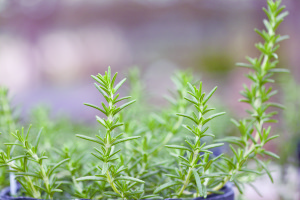Even a small herb garden provides plenty of fresh herbs for summer cooking. It won’t be long before these plants will be ready for sampling. With judicious picking, most herbs can be harvested continuously for several months.
If you have available yard or garden space, you can plant a kitchen herb garden. When choosing the location for your garden, keep in mind that most vegetables and herbs need as much sun as possible to do their best. Good drainage is also a must, so avoid low-lying areas where water collects. An ideal location would be a few steps from your kitchen, but any spot that gets about six hours of sun a day is good. Herbs can be added to any garden, and perennial herbs provide years of fresh herbs.
By planting herbs that are most often used in cooking, you can pick what you need all summer:
- Basil
- Sage
- Oregano
- Common thyme
- Sweet marjoram
- Lavender
- Rosemary
- Parsley
- Chives
- Cilantro
To prepare your area for planting, loosen the soil. If the soil is compacted or consists of heavy clay, improve drainage by adding some compost, peat moss or coarse sand. Work the material into the top foot of soil before you plant.
Follow these planting guidelines for a successful herb garden:
- Plant early in the morning or late in the afternoon to prevent the transplants from wilting in the midday sun.
- Dig each planting hole to about twice the width of the root ball of the new plant .
- Space herbs about 18 inches apart to give them room to spread out and grow.
- Place taller herbs, like sage, rosemary and marjoram, towards the back of the garden. Parsley and cilantro are good for the front.
- For accents of color in your herb garden, add flowering plants like zinnias and salvia.
- Plant perennials on one side and annuals on the other for easier replanting next year.
- Give the new transplants plenty of water. Once established, make sure your herbs get an inch of water each week throughout the growing season.
- Begin harvesting from the herbs as soon as they are mature, but take only a little bit each time you harvest. If you remove more than a third of the plant at one time , it takes longer to recover and produce new foliage.
- To promote branching, keep the tops of the plants pinched back in early summer . With judicious picking, most herbs can be harvested for several months.
Fresh herbs taste best when harvested in the morning. Also, herbs are most flavorful if harvested before they bloom.


